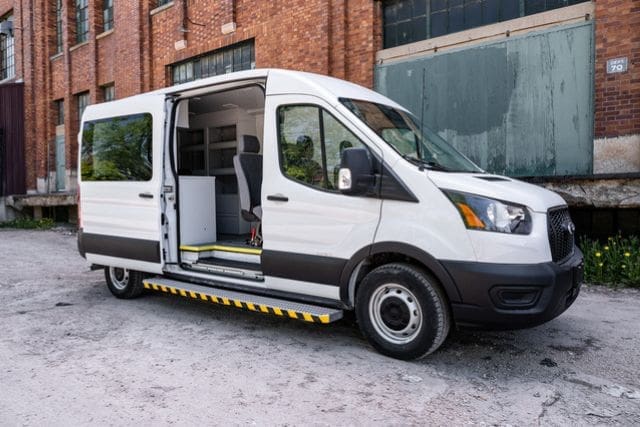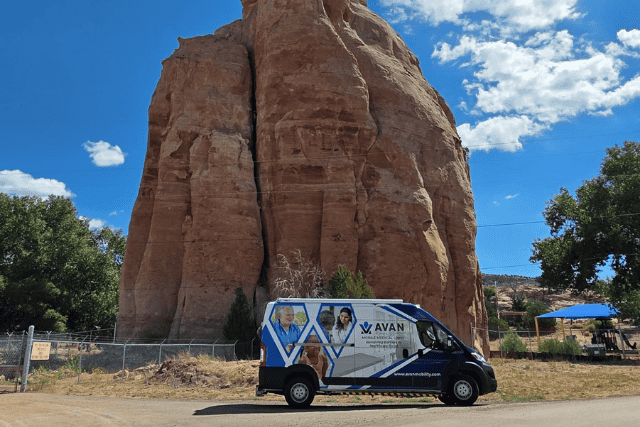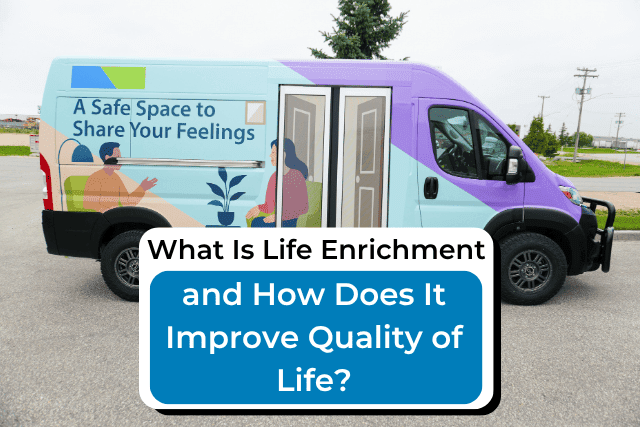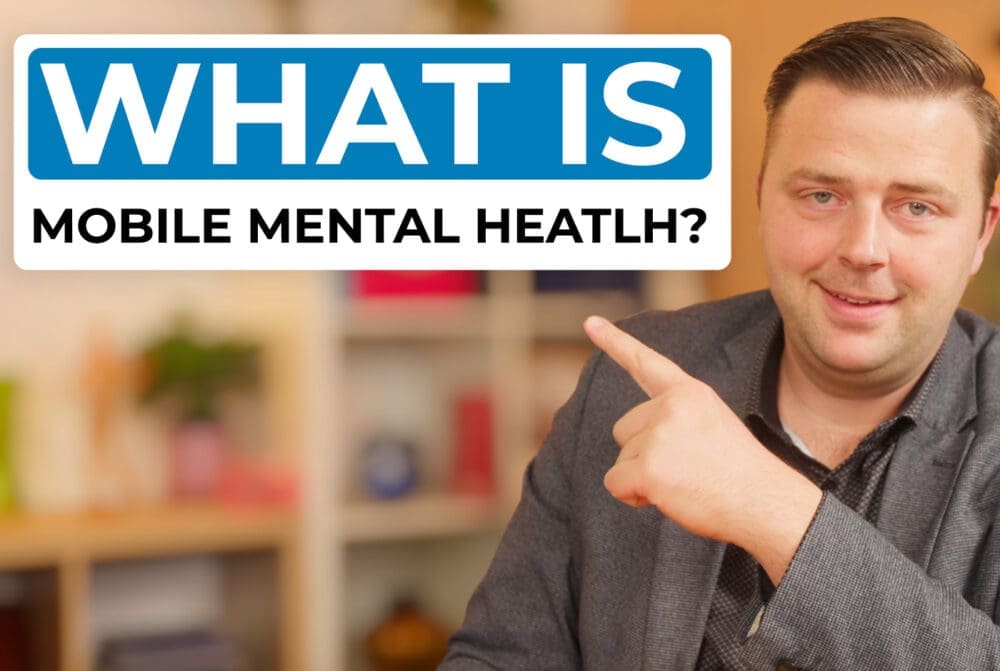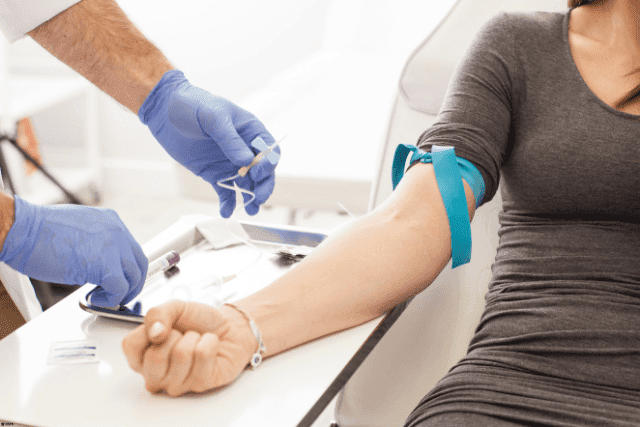Have you ever thought about how many people are homeless in the U.S.? According to recent data, over 653,000 people were homeless on a single night in January 2023. That’s a staggering number! Organizations like yours are trying to help this population, but it can feel overwhelming helping people who are constantly on the move, in remote areas, or feel stigmatized and fear reaching out for help.
A mobile van can help for the homeless: You’ve likely wondered, “How can we better serve this population?” This article will help you understand how a mobile van can help the homeless by closing these gaps and bringing essential services directly to them.
At AVAN Mobility, we’ve been in business for over 10 years, creating custom mobile medical units designed to break down barriers to healthcare and transportation. We partner with organizations like yours to provide life-saving solutions for underserved populations, including the homeless. While we know we aren’t the only manufacturer out there, our focus is on delivering vans that truly make a difference, just like we did for CalOptima.
In this article, you will learn about the big impact mobile medical vans can have on the homeless community. We’ll explore how they can provide essential services, help organizations close gaps in support, and make a real difference in people’s lives. Let’s dive in!
What barriers do the homeless population in the U.S. face?
The homeless population in the U.S. faces many barriers, especially when it comes to healthcare. Did you know that between 2019 and 2023, the number of people seeking emergency shelter for the first time jumped by over 23%?
In 2023, around 256,610 people—which is 39.3% of all homeless individuals—were living without any shelter at all. Over half of these individuals faced the harsh reality of being unsheltered. These stats highlight how urgent the situation is.
What healthcare barriers do homeless individuals face?
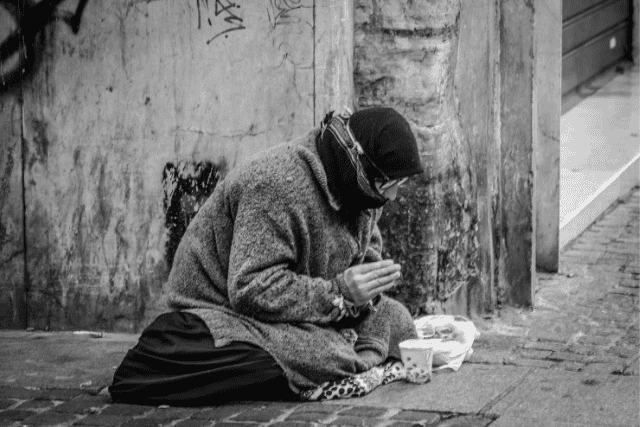
Many homeless individuals struggle to access basic healthcare services. Here are some of the main barriers they face:
Lack of insurance: Many homeless people do not have health insurance. Without insurance, getting medical help can feel impossible. This leaves many to go without check-ups or treatment for illnesses.
Transportation issues: Getting to healthcare appointments can be tough. Many homeless people do not have access to a reliable vehicle or public transportation, making it hard to reach doctors or hospitals when they need care. A mobile van can help the homeless by bridging this gap and bringing healthcare directly to those in need.
Mental health challenges: According to NAMI, people experiencing homelessness are 3 to 6 times more likely to have mental health issues than the general population. This statistic shows how vital it is to address these barriers. Without intervention, the cycle of poor health and homelessness can continue.
Fear and stigma: Some people fear going to hospitals or clinics because of past experiences or the stigma surrounding homelessness. They may worry about being treated poorly or being judged. This fear can keep them from seeking the care they need.
How do healthcare barriers affect the homeless population?
The barriers that homeless people face can seriously hurt their health and even lead to death. When someone can’t get regular medical care, they might miss important doctor visits. This can make existing health problems worse and create new ones.
For example, if someone has diabetes or high blood pressure and doesn’t get treatment, things can get really bad. Here are some ways these barriers can impact health:
Higher chances of getting sick: Common problems like colds or lung infections can become serious if not treated. A simple cold can become life-threatening without help.
Higher chance of dying young: Studies show that homeless people often live much shorter lives. The average age of death for someone without a home is just 47 years. This number shows just how important it is to help them.
Pregnant women: Finding help for pregnant and homeless women can be especially difficult. Without regular doctor visits, both the mother and baby are at risk. Complications can happen that could harm both of them.
Difficulty managing medications: Many people need medications to stay healthy. However, homeless individuals often lack a stable place to store their medicines or may not have a way to get prescriptions filled. This leads to missed doses and ineffective treatment.
Poor nutrition and hygiene: Many homeless people struggle to find nutritious food and clean water. Poor nutrition leads to weakened immune systems, making them more susceptible to illness.
Unsafe living conditions: When homeless, individuals often find shelter in unsafe areas. This can expose them to violence, substance abuse, and other risks that threaten their health and safety.
Mobile Van help for the homeless: How can a Mobile Outreach Van make a difference?
A Mobile Outreach Van is a special vehicle designed to bring essential services directly to people in need. These vans are used by programs that focus on helping individuals with various challenges. They can provide:
- Overdose prevention
- Harm reduction services
- Mobile health care
- Housing assistance
- Mental health and addiction counseling
- Referral services
The beauty of the Mobile Outreach Van is that it serves as both transportation and a clinic space. This means organizations can maximize by delivering services right where they are needed.
Your organization can use a Mobile Outreach Van to provide:
- Bedding for homeless shelters
- Blankets in bulk for homeless
- Bulk deodorant for homeless
- Bulk shoes for homeless people without them
- Bulk toiletries for homeless people in shelters
Features of the Mobile Outreach Van
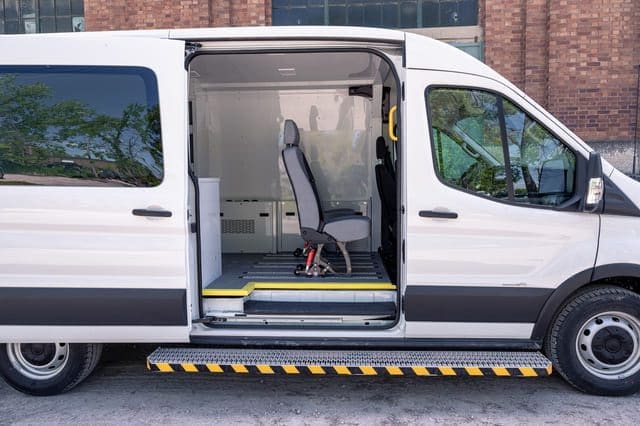
Here’s how the features of the Mobile Outreach Van from AVAN Mobility can specifically help homeless populations:
| Feature | Description | How it helps individuals experiencing homelessness |
| Aluminum floor-to-ceiling slide-to-open storage | Spacious cabinets for storing supplies. | Keeps items organized, like bedding/clothing for homeless shelters. |
| Mobile office desk space | A designated area with secured storage for records and equipment. | Helps staff manage cases and provide services efficiently to individuals seeking assistance. |
| Sink and fridge | Includes a sink for cleanliness and a fridge for storing supplies. | Supports proper hygiene and allows the storage of food and medications for homeless individuals. |
| Overhead storage | Additional space for storing bulky items. | Offers extra space for supplies like bulk toiletries for people in transitional housing. |
| Removable passenger seats | Seats can be adjusted based on the need for space. | Creates more room for supplies or additional clients needing assistance. |
| Power supply | Equipped with power outlets for charging devices. | The power supply means medical equipment can be used anywhere, from urban downtown streets to rural areas. |
| Rear Heat & Air Conditioning | Climate control for comfort in all weather conditions. | Keeps both staff and clients comfortable. |
| Optional lockable upper cabinet | Secure storage for sensitive items or medications. | Protects valuable supplies and ensures privacy for those receiving assistance. |
| Bright LED interior lighting | Well-lit interior for visibility and comfort. | Creates a safe environment where individuals can receive care without fear. |
| Conventional outlets and USB Ports | Multiple charging options for devices. | Keeps phones charged to connect clients with shelters and services. |
| Clean, comfortable environment | Designed to be a welcoming space for clients. | Creates safety and comfort for those seeking help, reducing the stigma faced by homeless individuals. |
| Optional extras | Includes items like a cab divider, winter tires, grab handles, and advanced medical equipment. | Enhances accessibility and safety, improving service delivery for those experiencing homelessness. |
Mobile van help for the homeless: your next steps with AVAN Mobility
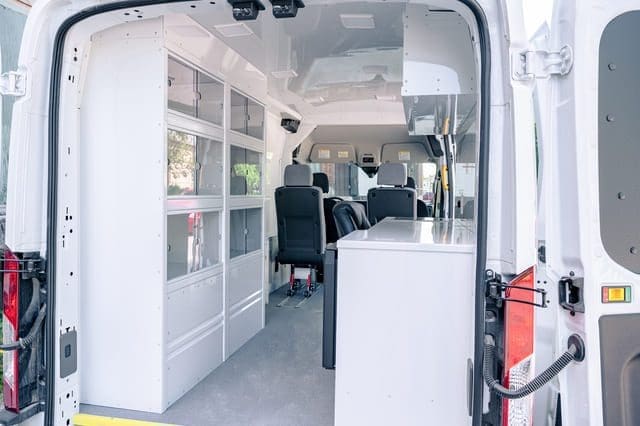
You came here to understand how a mobile medical unit could impact your organization’s outreach efforts. Through this article, you’ve seen the specific barriers homeless individuals face and how mobile outreach vans provide practical solutions to these challenges.
At AVAN Mobility, we believe in creating more than just vehicles; we create pathways to hope and health. Our Mobile Outreach Vans are built to be reliable, comfortable, and adaptable to meet the unique needs of homeless populations.
When you choose AVAN Mobility, you’re partnering with a team that’s passionate about using innovation to bridge gaps and build healthcare gaps all over the U.S. We’re here to help you make a lasting difference.
If you have questions or want to explore more, click the button below to speak with one of our mobility experts. We’re ready to find the right solutions for you and the people you serve.If you’re not quite ready to talk, check out some of our other resources to learn more about Mobile Outreach Vans and how AVAN Mobility can support your mission.
Start by checking out our article on street outreach and how you do it. It may give you some ideas about how to reach homeless populations in the U.S.
After that, read our article on the five areas to bring your Mobile Outreach Van to find out where to bring it for a big impact.
